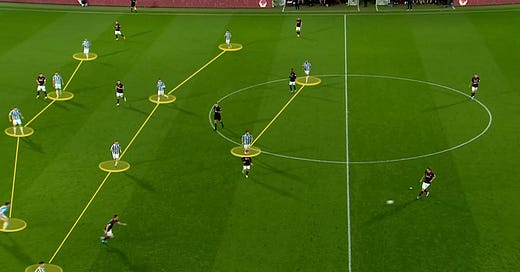Death, taxes and Tynecastle: How Killie conquered Gorgie (again)
It's been a happy hunting ground in recent years - here's how Derek McInnes and his side secured the win that took them back into the top six.
They say there are three certainties in life: death, taxes, and Kilmarnock winning at Tynecastle.
Since that famous 3-0 win under Mixu Paatelainen 14 years ago today the teams have met 21 times in Gorgie in all competitions with Killie winning 13 of those and drawing another four.
The latest came on Wednesday night as Derek McInnes’ men climbed back into the top six after coming from behind to take a 2-1 win.
While it wasn’t a perfect performance, it’s a third win in four Premiership matches and makes it just one loss in eight across all competitions.
Here’s our analysis of the inevitable.
Read More:
Derek McInnes Q&A: Killie boss thrilled with second-half vs Hearts
How Derek McInnes and Kilmarnock shut down Rangers for a deserved win
When the teams were announced it was clear McInnes was sticking with a 4-4-2 system, though many would have expected Lewis Mayo to play on the right hand side.
Instead it was the returning Joe Wright, making his first start since his red card at St Mirren, who took on that role.
From the off it was clear that McInnes wanted to make things as compact as possible in the middle of the pitch, the manager clearly not worried about Hearts being able to get in behind.
While Killie have all 11 players in their own half in the image above, the defence are at least 30 yards from their own goal.
That lack of space in midfield makes it very hard for Hearts to attempt to play through the middle, and the pattern of the game was the hosts knocking the ball around at the back before eventually trying a ball in behind which, almost invariably, came to nothing.






